In this event, Natalie Foster, author of “The Guarantee: Inside the Fight for America’s Next Economy,” asks us to imagine a new economic framework that casts aside the failures of the trickle-down approach and builds economic security and well-being from the bottom up. Foster, who serves as president and co-founder of the Economic Security Project and as a senior fellow with the Institute’s Future of Work Initiative, describes a bold vision in which housing, health care, higher education, dignified work, family care, and an opportunity to build generational wealth are guaranteed for all by our government.
In this event, panelists discuss the state of workplace benefits, innovative approaches to improve access and effectiveness, and ideas for how to build on these in the future. Presenters also share findings from research conducted by the Aspen Institute’s Future of Work Initiative, which highlights the benefits-related challenges that many workers face today.
This piece provides a summary and highlights from “Good Work in the Gig Economy: Building a Sustainable App-based Economy,” an Opportunity in America event EOP hosted in 2023.
This piece provides a summary of The Case for Good Jobs: How Great Companies Bring Dignity, Pay, and Meaning to Everyone’s Work, a book talk EOP hosted with MIT Professor Zeynep Ton in 2023.
This playbook, developed by A—B Partners, is part ot the Aspen Institute Economic Opportunities Program’s Shared Success project. Shared Success is working with CDFIs across the US to help them integrate job quality into their financing and advising services. This playbook offers findings and recommendations on how best to communicate the importance of job quality to owners of small- and medium-sized businesses.
This piece is a call to action for workforce development, advocating not just for a job quality framework for the sector’s work with clients but also for the need to increase job quality for practitioners themselves.
This op-ed, originally published in the Chronicle of Philanthropy, discusses how philanthropy can help support job quality as the federal government invests in clean energy and infrastructure.
This article discusses EOP’s research and lessons learned on how philanthropy, employers, practitioners and policymakers can support good jobs for young adults.
HCAP Partners – a fund providing debt and equity growth capital to lower-middle market companies – has developed this operational impact approach to assess job quality standards and improvements in portfolio companies through a quantitative measurement system. HCAP has identified five key attributes of job quality that fall within the categories of economic opportunity and health and wellness. HCAP engages with businesses to collect data, develop a baseline assessment, and build a strategic roadmap to implement and improve workplace initiatives for creating and maintaining high quality jobs. While this bespoke measurement system is designed to meet HCAP’s needs, other investors, lenders, and practitioners who work with businesses to improve job quality may find HCAP’s job quality definition and measurement framework useful in developing their own tools.
In this event, Zeynep Ton, author of “The Case for Good Jobs: How Great Companies Bring Dignity, Pay, and Meaning to Everyone’s Work,” discusses the components of a “good jobs” system, which ensures a living wage, dignity, and opportunities for growth to employees, and helps to foster shared success for both workers and organizations. Ton — a professor at MIT’s Sloan School of Management and president and co-founder of the Good Jobs Institute — explores the benefits of this approach; the disadvantages of low-paying and high-turnover jobs; how labor investments can pay for themselves; the obstacles to creating a good jobs system; and how leaders can break free and overcome these challenges to create good jobs.
